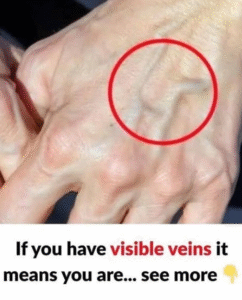Suddenly bulging and visible veins can be surprising, especially if you’ve never noticed them before. There are several possible reasons for this change, and while many are harmless, some may indicate underlying health conditions that deserve attention. The body’s veins can become more prominent due to temporary changes in blood flow, external temperature, physical activity, or more chronic factors like aging, weight loss, or circulatory issues.
One of the most common causes is increased physical activity. During exercise, especially strength training or cardio, blood flow increases, and your muscles push against surrounding veins, making them more visible. This is often temporary and considered normal. It’s a common phenomenon known as “vascularity,” often sought after by bodybuilders and athletes as a sign of low body fat and high muscle tone.
Heat exposure is another factor. In hot weather or after a hot shower, your blood vessels dilate to help release body heat. This dilation causes veins to expand and become more visible under the skin. This is temporary and generally nothing to worry about.
Weight loss, particularly fat loss, can make veins more visible. As the layer of subcutaneous fat beneath your skin thins, veins that were once hidden become more apparent. This happens gradually but can seem sudden if you’ve lost weight quickly due to dieting, illness, or increased activity.
Aging is another natural cause. As you age, your skin loses collagen and becomes thinner, which can make veins stand out more. Simultaneously, vein valves may weaken, especially in the legs, causing blood to pool and veins to bulge. This can lead to varicose veins, which are swollen, twisted veins often seen in older adults.
Sometimes, stress or anxiety can cause temporary vein prominence due to increased blood pressure and elevated heart rate. Your body sends more blood to the muscles during the “fight or flight” response, which can make veins pop out momentarily.
In some cases, visible veins might result from medical conditions. One example is chronic venous insufficiency, where vein valves in the legs don’t work properly, leading to pooling blood and swollen veins. Symptoms may include aching, cramping, or heaviness in the legs. Deep vein thrombosis (DVT), a serious condition, can also cause visible veins and is often accompanied by swelling, pain, or warmth in the affected area. If you suspect this, immediate medical attention is crucial.
Hormonal changes, such as those during pregnancy or menopause, can also lead to changes in the appearance of veins. During pregnancy, for example, increased blood volume and pressure from the growing uterus can cause veins, particularly in the legs, to become more prominent.
Certain medications or supplements can cause vein visibility as a side effect. These may include medications that alter blood pressure, blood thinners, or hormone-related drugs. If you’ve recently started a new medication and notice changes in your veins, it’s worth discussing with your doctor.
Genetics play a role, too. Some people naturally have more visible veins due to inherited traits such as lighter skin, thinner skin, or a predisposition to varicose veins. If your parents or grandparents had noticeable veins, you might experience the same, even without other contributing factors.
Dehydration can also contribute. When you’re dehydrated, your blood thickens slightly, and your skin may become less elastic, making veins appear more pronounced.
In rarer cases, infections, tumors, or vascular diseases can alter the appearance of veins. If the change is accompanied by pain, swelling, color changes, or warmth, it’s important to seek medical evaluation.
It’s also possible that your awareness has changed, rather than your veins themselves. Sometimes, people become more observant of their bodies and notice things that were always there but previously went unnoticed.
In summary, suddenly bulging and visible veins can result from a variety of causes—most of them benign, like physical activity, heat, or aging. However, if the change is persistent, occurs with other symptoms (pain, swelling, discoloration, or skin changes), or if you’re unsure about the cause, it’s always a good idea to consult a healthcare professional. Understanding the context of the change—when it began, any accompanying symptoms, and your lifestyle—can help determine whether it’s a natural body response or something that needs further attention.


